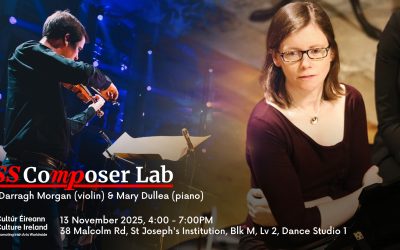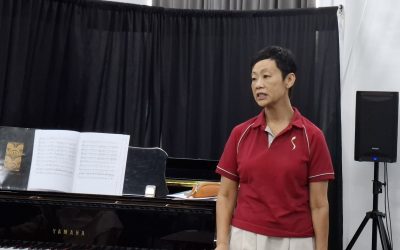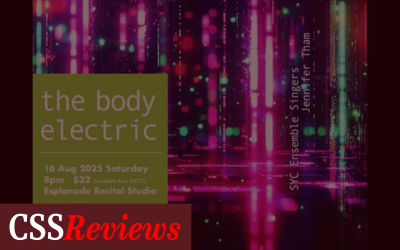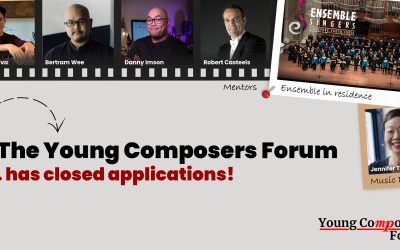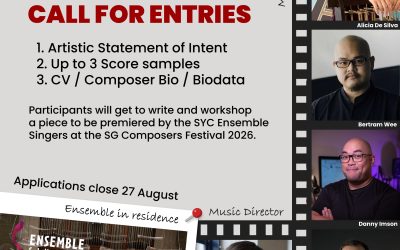This article, contributed by Dr Robert Casteels, aims to convince more Singaporean composers to deposit their compositions with Legal Deposit.
What is Legal Deposit?
Under the National Library Board Act, all works published and distributed in Singapore must be deposited with the National Library for preservation. The National Library preserves Singapore’s heritage and knowledge. NLB is the custodian of Singapore’s published works that remain accessible onsite and/or online. Currently the collection amounts to 1.5 million physical items and fifteen thousand digital items.
What is an ISMN?
The International Standard Music Number (ISMN) is a smart number, that is intended to be unique for notated music, whether published in print, online, or in other media. It is the music equivalent for ISBN for books. Each edition or version of a musical work is assigned an ISMN. ISMN has existed since 1993, and is used world-wide, as a standard, unique identifier allowing precise communication across languages, scripts, cultures, borders. An ISMN is comprised of 13 digits divided into four elements. The prefix for music is always identical: 979-0. Items with ISMN can be fast-tracked into the permanent collections of a libraries. Having a ISMN attached to your work ensures your work can be easily identified as available for sale, hire, gratis or for copyright purposes only. The assignment of an ISMN to a publication of notated music, shall not imply any meaning or value as legal evidence with regard to the ownership of rights to that publication.
Why should I deposit my compositions with legal Deposit?
I believe all composers should deposit their works for three reasons: (1) out of short-term self- interest, (2) out of long-term self-interest and (3) out of esthetically moral duty.
(1) Pardon me for sharing the following personal anecdote. Somehow after moving house, I could not find a physical score of one of my compositions and the soft copy on a disk was not accessible anymore. Because I deposited this composition, I could borrow my own composition from the National Library.
(2) Even if future performers and conductors discover your work and are interested in performing that work, they will not go through the time and financial expense to recreate the scores and the parts. I arrived in Singapore in the mid-1990s and was very surprised in not being able to conduct works by Singaporean composers from the 1960s because sets of parts disappeared or were incomplete.
(3) You may not care about the fate of your work once you have joined your ancestors. But how can NLB preserve our works if we composers do not deposit our compositions nor the programmes of our concert? I arrived in Singapore in 1994 and was surprised how difficult it was to find scores and parts of works by deceased Singaporean composers. We are so absorbed in making sense of our own existence that we have no reason to try imagining what people in later ages might think of us. We are so absorbed in our present. Yet, no man is an island. I believe we should not be oblivious to what we are leaving behind for those who come after us and might want to make sense of their world.
How do I obtain an ISMN for my composition?
NLB provides a one-stop online platform for issuance of ISMN and e-depositing with a 42-page Deposit Portal User Guide accessible on their website. If composers are in need of assistance, they can approach the library at enquiry@nlb.gov.sg.
Step 1: Create a user account as publisher (free of charge). You need only do the first time.
Step 2: Apply for a ISMN that NLB provides free of charge.
Step 3: Type the ISMN at the bottom left of the reverse of the cover of your score.
Step 4: E-deposit your score in the PDF format. You can choose if you wish your material to be viewed remotely online, or only onsite. If you don’t wish your composers colleagues to discover parallel octaves and fifths, you can set an embargo of up to 3 years ☺️. You can submit material with or without a registered ISMN.
OR
Drop two copies of the physical score via the book drop at any of NLB’s libraries or you mail them to Legal Deposit Office at Changi South.
The special case of parts
If you composed a large symphonic works with, let’s say, forty parts, submitting the full score is easy. E-submitting the parts is challenging. Under the ISMN guidelines, the same ISMN applies to all parts when none of the parts will be made available separately. When the parts of a score are to be made available separately, each part must be assigned an ISMN. If you do apply for forty ISMNs for each part which will be made available separately, then you will need to e- submit forty times. For assistance, please write in to enquiry@nlb.gov.sg.
What about composers’ drafts and archives?
Drafts, archives and concerts booklets are a precious source for future researchers and musicologists. Certain composers like Bartok carefully destroyed his drafts, especially anything revealing his mathematical calculations. Even if you are lucky to have an institution preserving your archives, even if your family owns such property with enough archival space and budget for an archivist, fire and water are the enemy of archives. See what happened in January 2025 when the Pacific Palisades fire destroyed the building housing Belmont Music Publishers, the exclusive publisher of physical works by early 20th century composer Arnold Schoenberg. Even if most of Schoenberg’s original manuscripts are held at a museum in Vienna, Austria, the loss of an estimated 100,000 scores, parts and documents in California is shockingly huge because not of it was digitalized. What about Singaporean composers’ drafts and archives? Composers interested in donating their musical drafts/archives can write in to National Library at enquiry@nlb.gov.sg..
Verba volant, scripta manent
This Latin proverb translates as “spoken words fly away, written ones remain”. The invention of recording in 1857 disproves the 1st proposition of the proverb. However, devices to store our recordings quickly become obsolete. To give but one example, audio cassettes invented introduced in 1961 were sold as the final solution in preserving and playing your recordings. By the late 1990s, cassettes declined in favour of CDs. By 2000s cassettes disappeared. Storing data long-term on cloud-based platforms could well also disappear.
The 2nd proposition of the Latin proverb became paradoxically doubtful since the invention of the computer. Even if you created your works with a music notational software, created back- ups, stored them long-term on cloud-based platforms, these “written” documents may become inaccessible or disappear.
Unless your fatalism convinces you that anyway in 7.59 billion years from now the sun will pulverize the earth, be smart and deposit your works with Legal Deposit.


